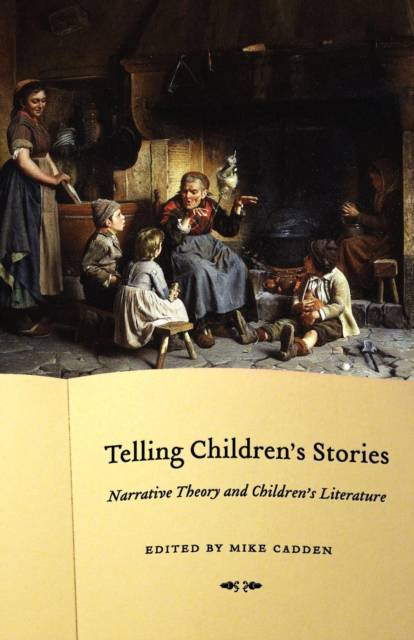
- Afhalen na 1 uur in een winkel met voorraad
- Gratis thuislevering in België vanaf € 30
- Ruim aanbod met 7 miljoen producten
- Afhalen na 1 uur in een winkel met voorraad
- Gratis thuislevering in België vanaf € 30
- Ruim aanbod met 7 miljoen producten
Telling Children's Stories
Narrative Theory and Children's Literature
€ 53,45
+ 106 punten
Omschrijving
The most accessible approach yet to children's literature and narrative theory, Telling Children's Stories is a comprehensive collection of never-before-published essays by an international slate of scholars that offers a broad yet in-depth assessment of narrative strategies unique to children's literature. The volume is divided into four interrelated sections: "Genre Templates and Transformations," "Approaches to the Picture Book," "Narrators and Implied Readers," and "Narrative Time." Mike Cadden's introduction considers the links between the various essays and topics, as well as their connections with such issues as metafiction, narrative ethics, focalization, and plotting. Ranging in focus from picture books to novels such as To Kill a Mockingbird, from detective fiction for children to historical tales, from new works such as the Lemony Snicket series to classics like Tom's Midnight Garden, these essays explore notions of montage and metaphor, perspective and subjectivity, identification and time. Together, they comprise a resource that will interest and instruct scholars of narrative theory and children's literature, and that will become critically important to the understanding and development of both fields.
Specificaties
Betrokkenen
- Uitgeverij:
Inhoud
- Aantal bladzijden:
- 344
- Taal:
- Engels
- Reeks:
Eigenschappen
- Productcode (EAN):
- 9780803215689
- Verschijningsdatum:
- 1/01/2011
- Uitvoering:
- Paperback
- Formaat:
- Trade paperback (VS)
- Afmetingen:
- 140 mm x 216 mm
- Gewicht:
- 439 g

Alleen bij Standaard Boekhandel
+ 106 punten op je klantenkaart van Standaard Boekhandel
Beoordelingen
We publiceren alleen reviews die voldoen aan de voorwaarden voor reviews. Bekijk onze voorwaarden voor reviews.








